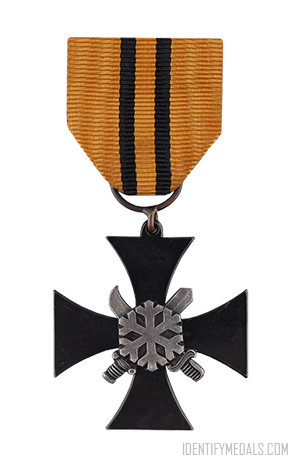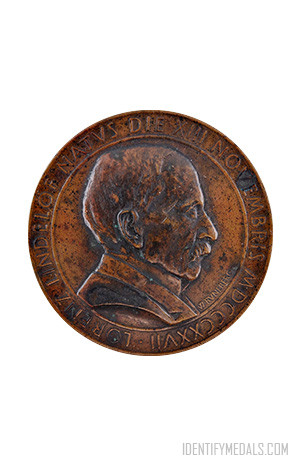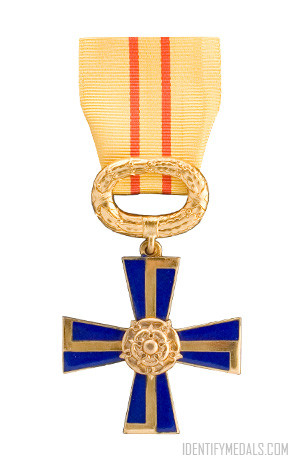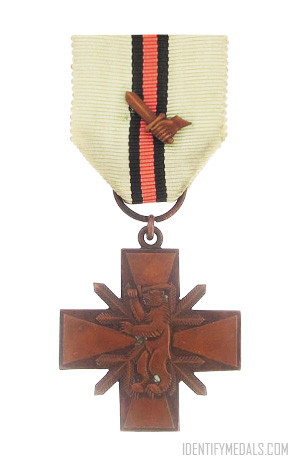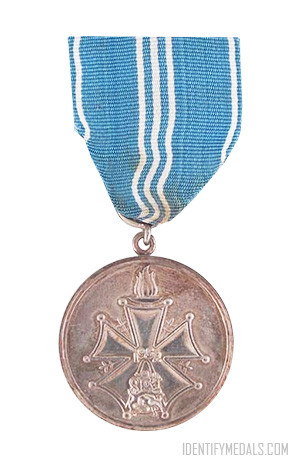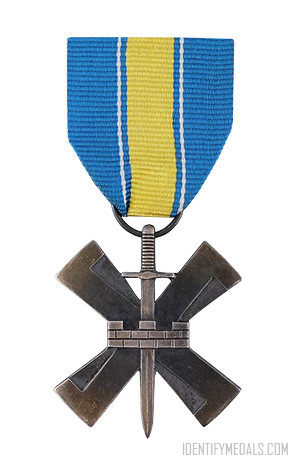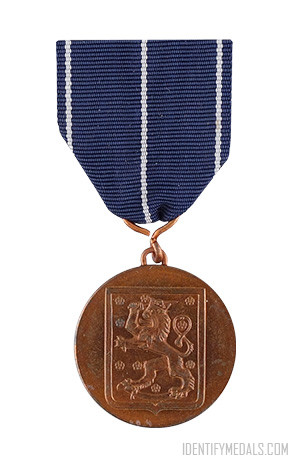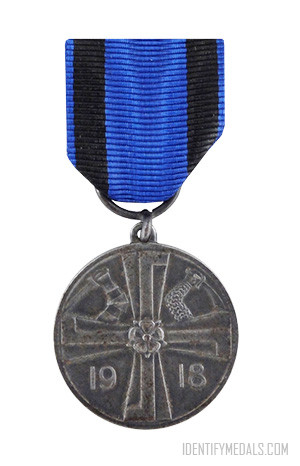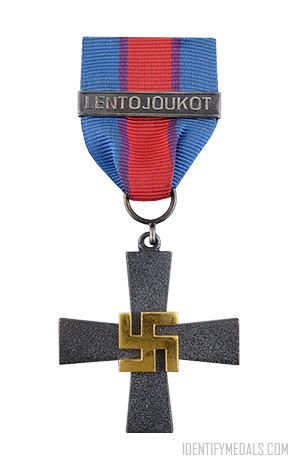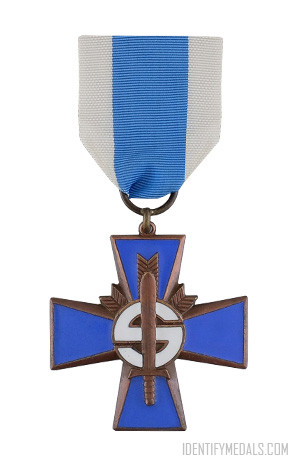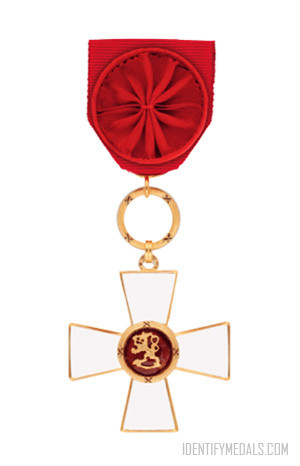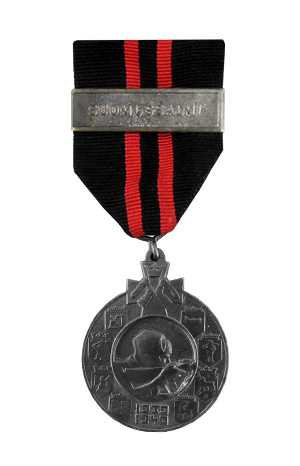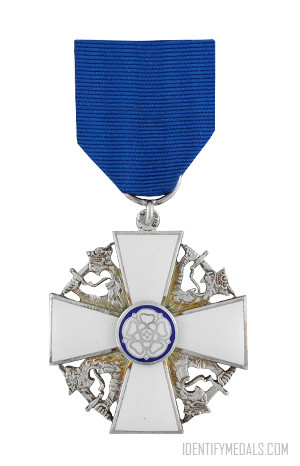- Time Period: Second World War – WW2
- Institution: 1940
- Country: Finland
The 1939-1940 Finnish Middle-Isthmus Battle Cross (or Keski-Kannaksen Risti in Finnish) was instituted in 1940 and awarded to participants of the defence of the Karelian Isthmus.
The Karelian Isthmus (Karjalankannas in Finnish) is the approximately 45–110-kilometre-wide (30–70 mi) stretch of land that is situated between the Gulf of Finland and Lake Ladoga in northwestern Russia, to the north of the River Neva. The Vyborg–Petrozavodsk offensive or Karelian offensive was a strategic operation by the Soviet Leningrad and Karelian Fronts against Finland on the Karelian Isthmus and East Karelia fronts of the Continuation War, on the Eastern Front of World War II.
The 1939-1940 Finnish Middle-Isthmus Battle Cross Design
The medal is a two-piece construction in blackened bronze with a silvered centrepiece and measures 39 mm wide.
The Cross of the Central Karelian Isthmus Battle has an eyelet and a loop for ribbon suspension, as well as silvered crossed swords on the obverse. On top is a central snowflake. The reverse is plain.
The ribbon is orange with two black stripes in the middle.

